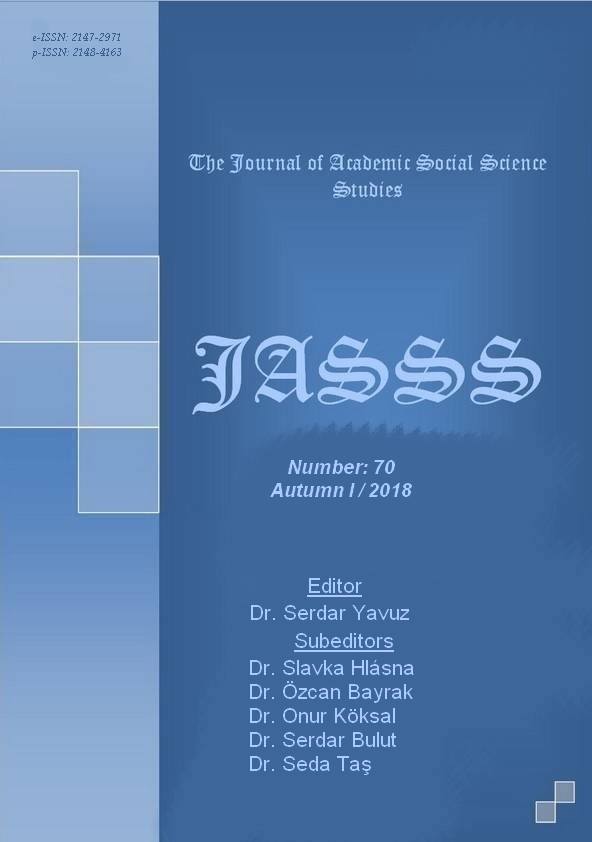Author :
Abstract
Felsefe ve sanat tarihi bağlamında ütopya, düşünce tarihi açısından çok sayıda tartışmanın anahtar kavramı olarak yer almıştır. 1516 yılında Thomas More’ un yazdığı Ütopya eseri, ütopyanın sanatla doğrudan bağının kurulduğu bir başlangıç olarak kabul edilir. Postmodern dönem düşünsel anlamda bir distopya dönemidir. Distopya olarak postmodern düşünce hedefe ulaşmadan biten yolculuğa acı çekmeden bakabilmektir. Bu bağlamda Bauman Foucault, Gramsci, Froster, Deleuze, Zizek ve Bourdieu gibi teorisyenlerin liberal ütopyanın eleştirisine yönelik distopik analizleri, distopyanın kuramsal dayanaklarını oluşturmuştur. Çok sayıda sanatçı bu savlara ilgi duymuş, ürünlerinde söz konusu analizleri somutlaştırmıştır. Distopya bir tür kara ütopya olarak da algılanmış, postmodern duyarsızlığın modernliğe karşı tepkisizlik olarak algılanmasını sağlamıştır. Distopya; modern insanın hayallerinden vazgeçmesi, kendisine hedef belirleyememesi, belirlediği hedefte ilerleyemeden yorulması, her parlak fikrinin kısa zamanda önemsizleşmesi gibi bir olumsuz evren içerir. Bu evren zaman zaman sanat ürünün kendini var etmeye çalıştığı evrendir. Edebiyatla başlayan distopya; sinema ve tiyatro alanlarında yoğunluk kazanırken grafik tasarımı bu dönüşümden kendini uzaklaştıramamış, çok sayıda marjinal grup ve sanatçı topluluğu üretimlerinde distopik yöntemi seçmiştir. Araştırma 20. yüzyıldan başlayan sanatta distopya düşüncesini irdeleyerek, söz konusu düşüncenin grafik tasarımlarında somutlaşma biçimini tartışacaktır. Araştırmada literatür tarama yöntemi ile distopya düşüncesini tartışan görüşler seçilip; bu görüşlerin öncelikle sanata daha sonra da grafik tasarımına yansıması irdelenecektir.
Keywords
Abstract
In the context of philosophy and art history, utopia has been the key concept of many controversies in terms of the history of thought. The Utopia written by Thomas More in 1516 is regarded as the beginning of the utopian direct connection with art. The postmodern period is a period with intellectual dystopia. The postmodern thought ensures the ability to look at the journey which ended up without reaching the goal without suffering. In this regard, dystopian analyses of the theorists such as Bauman Foucault, Gramsci, Froster, Deleuze, Zizek and Bourdieu for the criticism of the liberal utopia created the theoretical basis of dystopia. A quite large number of artists showed interest in these arguments and embodied these analyzes. Dystopia was also perceived in a kind of dark utopia, and it allowed postmodern insensitivity to be perceived as a reaction to modernity. Dystopia contains a negative universe in the manner that the modern man gives up his dreams, can’t set a target to himself, gets tired on this target without making any progress, and each of his bright idea becomes unimportant in a short period of time. This is the universe where the work of art struggles to come into existence at times. While dystopia starting with literature has intensified in the areas of cinema and theater; for the area of graphic design, it has been impossible to stay away from this transformation, and a large number of marginal groups and artist community have chosen the dystopian method in their production. Examining the dystopian thought in the art starting from 20th century, the research will discuss the way, in which this thought embodies in graphic designs. In the research, opinions, discussing the idea of dystopia will be designated by literature search method as well as the reflection of these opinions firstly on art and then on graphic design.





